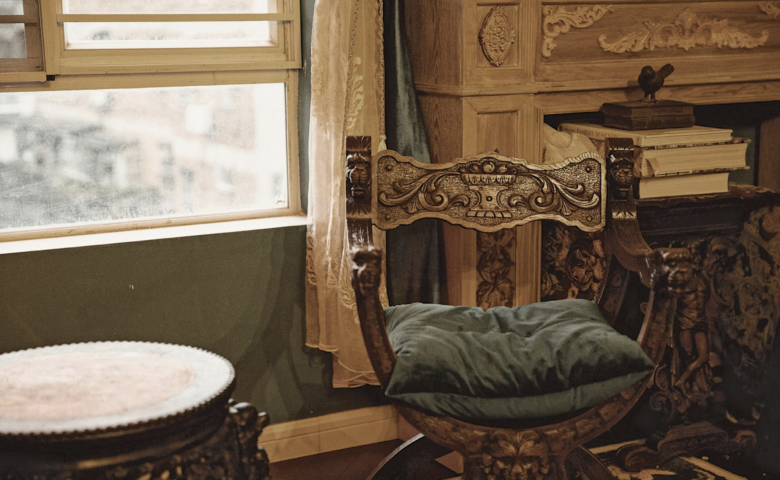The allure of antique furniture lies in its ability to tell stories, evoke nostalgia, and bring a sense of history and charm into our modern lives. Whether it’s a finely crafted Georgian sideboard, a Victorian mahogany bookcase, or a rustic painted farmhouse table, each piece of antique furniture carries with it a narrative of the past and a craftsmanship that is often unmatched by contemporary creations. In this article, we will delve into the enduring appeal of antique furniture, discussing its various styles, the uniqueness of painted pieces, and how to incorporate these treasures into your living room for a timeless aesthetic.
The Charm of Antiques: More Than Just Furniture
Antique furniture is not merely functional; it’s a testament to the artistry and skill of the past. With each dovetail joint, hand-carved detail, and patina that has developed over time, antique pieces reflect the history and culture of their period. Owning a piece of antique furniture means appreciating the craftsmanship that has withstood the test of time and the stories embedded within its wood.
Why Choose Antique Furniture?
Opting for antique furniture over modern pieces can bring a multitude of benefits, including:
- Quality and Craftsmanship: Antique furniture is often made with superior materials and techniques that are rare in today’s mass-produced items.
- Sustainability: Purchasing antique pieces promotes sustainability by recycling beautiful items that have already stood the test of time.
- Aesthetic Appeal: The unique designs of antique furniture add character and sophistication to any home.
- Investment Value: Well-maintained antique furniture can retain or even increase in value over time.
The Art of Antique Painted Furniture
by Birmingham Museums Trust (https://unsplash.com/@birminghammuseumstrust)
Antique painted furniture adds a special element to the antique world. These pieces are often characterized by their intricate hand-painted designs, colorful finishes, and distressed textures, which can add a warm and inviting ambiance to any space.
The Beauty of Patina
One of the most prized features of antique painted furniture is its patina—the natural wear and aging of the paint that gives the piece its distinctive character. This cannot be replicated in new furniture, making each antique painted item a one-of-a-kind work of art.
Techniques and Styles
Various painting techniques have been employed throughout history, from milk paint and chalk paint to gilding and faux finishes. These methods contribute to the distinct look of antique painted furniture, with each style reflecting the era and region it comes from.
Antique Furniture Through the Ages
Antique furniture spans multiple centuries and styles, each with its own characteristics and historical context. Here are some of the most notable periods:
Renaissance and Baroque (15th – 17th Century)
Renaissance furniture was known for its opulence, with rich materials and elaborate carvings. The Baroque era continued this trend with even more dramatic designs and ornamentation.
Georgian and Regency (18th – Early 19th Century)
The Georgian period introduced elegance and symmetry in furniture design, while the Regency era saw a move towards neoclassical motifs and graceful lines.
Victorian (Mid to Late 19th Century)
Victorian furniture is often associated with heavy, dark woods, elaborate carvings, and ornate fabrics. This period also saw the introduction of new manufacturing techniques that allowed for more intricate designs.
Arts and Crafts (Late 19th – Early 20th Century)
The Arts and Crafts movement was a reaction against industrialization, emphasizing handcrafted furniture with simple forms and a focus on quality materials.
Curating Antique Living Room Furniture
Integrating antique furniture into your living room can create a warm, inviting, and personalized space. Here’s how to do it effectively:
Mix and Match
Don’t be afraid to mix antique pieces with modern elements. A vintage furniture item can act as a focal point in a contemporary setting, adding depth and interest to the room.
Statement Pieces
Consider using a large piece of antique furniture, such as a cabinet or armoire, as a statement piece. Its rich history and intricate details can serve as a conversation starter and anchor the room’s decor.
Accessorize Thoughtfully
Complement antique furniture with appropriate accessories. Vintage lamps, mirrors, or artworks can enhance the antique feel without overwhelming the space.
Maintain Balance
Ensure there is a balance between antique and modern items. Too much antique furniture can make a room feel like a museum, while a single piece can be overshadowed by more contemporary decor.
Caring for Your Antique Furniture
Preserving the beauty of your antique furniture is essential to maintain its value and appearance. Here are some tips for proper care:
- Avoid Direct Sunlight: Prolonged exposure to sunlight can fade and damage the finish of antique furniture.
- Regular Dusting: Use a soft, dry cloth to gently dust your antiques. Avoid harsh chemicals or abrasive cleaners.
- Control Humidity: Excessive dryness or humidity can cause wood to crack or warp. Try to maintain a stable environment.
- Professional Restoration: If your antique furniture requires repair, seek the expertise of a professional restorer who specializes in antique furniture.
Where to Find Antique Furniture
If you’re looking to add antique furniture to your home, explore the following options:
- Antique Shops: Local antique shops often have a wide selection of furniture and knowledgeable owners who can provide valuable information.
Pss – like our store, Found Vintage & Antiques in Seaford, NY!
- Auctions: Auction houses are excellent places to find unique antique pieces, though it’s important to do your research beforehand.
- Online Marketplaces: Websites like eBay, Etsy, and 1stdibs offer a vast array of antique furniture from sellers around the world.
- Estate Sales: Estate sales can be treasure troves for antique hunters, often featuring high-quality pieces at reasonable prices.
Conclusion
Antique furniture brings an element of beauty, history, and craftsmanship into our homes that is unmatched by modern pieces. Whether you’re drawn to the hand-painted finishes of antique painted furniture or the classic elegance of antique living room furniture, these timeless treasures can enhance any interior design. By mixing antique and contemporary elements, caring for your pieces properly, and choosing furniture that resonates with your personal style, you can create a living space that is both beautiful and historically rich.


